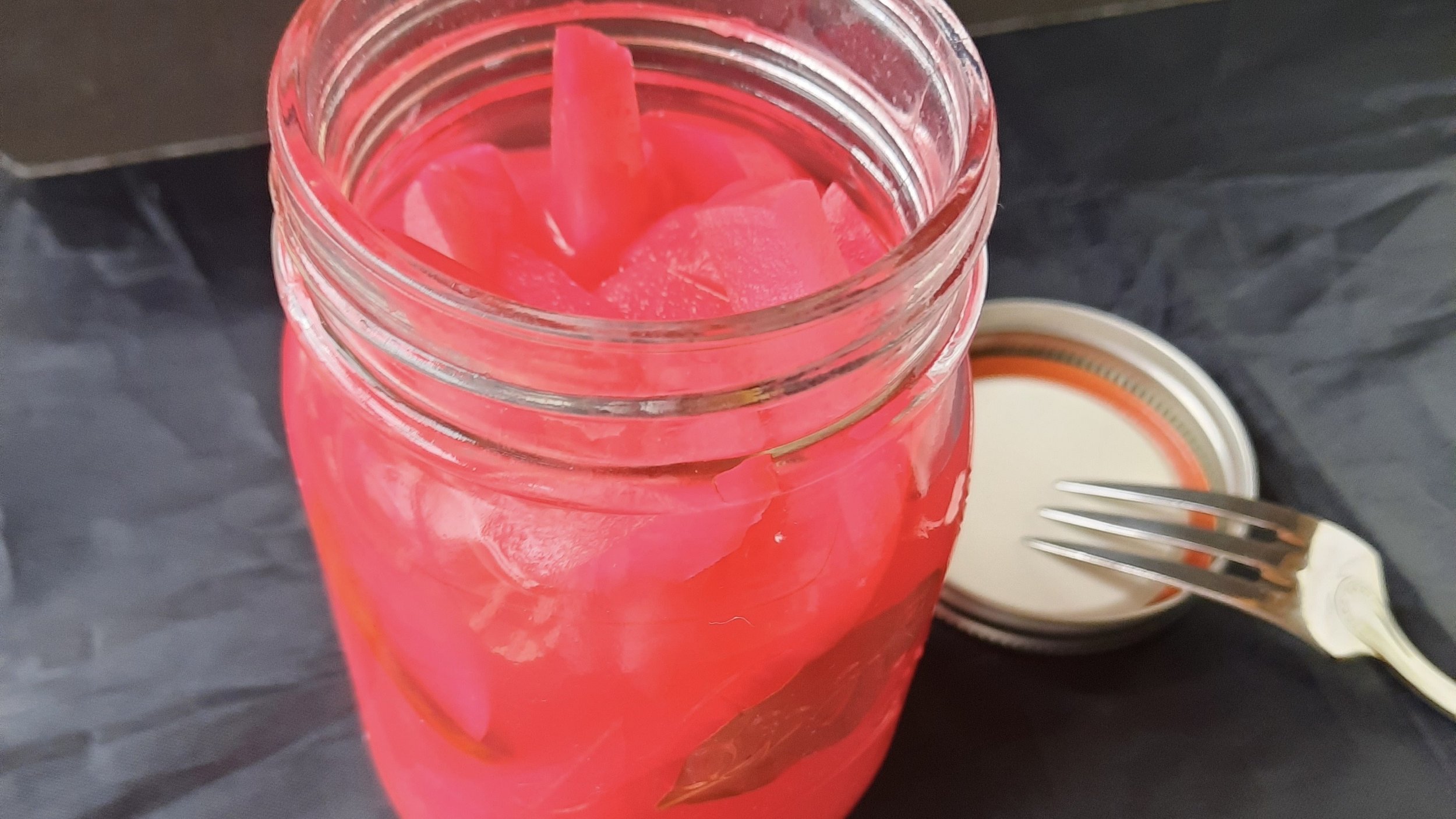THE TURNIP
A recipe for Pickled Turnips follows the story below.
Woe is the story of the turnip.
During the Middle Ages, when what you ate signaled your social class, nobles and ecclesiastics eschewed foodstuffs that grew in the ground. They favored foods plucked off the branches of trees, or fowl that flew in the air. The rule was not to eat that which was born of the dirt.
Garlic bulbs, carrots, and of course turnips—these and many more edibles—were food only for the lower classes or those in servitude (of whom there were teeming numbers). Wasn’t it true that the turnip and other roots had long been mere animal fodder, not fare for the table?
I imagine that, in those dark days, those who were close to the land, whether their own or their lord’s, just kept their tasty secrets to themselves. How delicious a treat, a pot of long-braised turnips and their greens, scented and flavored with leeks and garlic, then napped in some of your goat’s milk butter!
But if you think about it, the turnip (and root foods of its ilk such as the rutabaga or beet) likely played a role in our food history that is not only significant but itself also quite noble.
For millennia, ready human hands had it easy harvesting fruits, nuts and berries that grew on trees, vines or bushes, or picking vegetables such as peas and long beans that flourished above ground. It was easier still to glean the wild grains, lettuces and cabbages that simply sprouted about.
Yet, to get at the nourishment in the roots or bulbs stored underneath certain plants underground, why that took some doing by hungry people in search of it. Those same ready hands needed tools, if even something so primitive as a mere digging stick.
But these sticks were the prototypes of the hoe and the plow. Couldn’t we claim, then, of all following farming tools? It’s not too far-fetched to consider the turnip and its kin as the Fathers of Agriculture, that systematic growing of food that required furrowing fields and planting seeds and that we developed once we settled down from solely hunting and gathering.
Humans cultivated Brassica rapa, the Latin name for the common white-bottomed and purple-topped turnip (and thus the tell-tale that it is but one offspring in the extensive cabbage, or Brassica, family) well before the time of Western recorded history, back to 2,000 B.C., originally in the region around the Baltic Sea and the Caucasus. The turnip is one of the most ancient of foods.
By the 1400s, it had spread throughout Europe; by the 1600s, into North America.
The best turnip buying season is between November and February, in the Northern Hemisphere, but turnips with frequent flyer miles get here year-round, especially from Chile when it is cooler there (our spring and summer). Look for firm, heavy-for-their-size globes, unblemished skins and, if the greens are attached, they should be crisp and fresh-looking. (Store greens and roots separately.) Smaller turnips are generally sweeter than larger ones.
Turnips are delicious pickled (the recipe here) but also, when cooked, give a dense, creamy flesh akin to that of potatoes, but with more zing and less starch. They are super in soups and fantastic as purées.
It was a vanity when the Italian author Agnolo Firenzuola (1493-1543), in his comedy “La Trinuzia,” first wrote the turnip’s historic epitaph, “Mal si può trar da la rapa sangue.” (There’s no getting blood from a turnip.)
That was never the turnip’s job, any such sanguine art. Its work for us was simply to be healthy and delicious.
A jar of Pickled Turnips.
Pickled Turnips
Adapted from davidlebovitz.com and foodnetwork.com. Makes about 5-6 cups.
Ingredients
3 cups water
1/3 cup coarse sea or kosher salt
2 teaspoons cane sugar
2 small bay leaves
2 small dried red peppers
1 cup white distilled vinegar
2 pounds turnips, peeled
1 small beet, peeled
3 cloves garlic, peeled and sliced thin
Directions
Over medium-low heat, warm 1 cup of the water, the salt, sugar, bay leaves and peppers. Cook, stirring, until the salt and sugar dissolve; do not boil.
Remove from the heat and let cool to room temperature. Then, to the pot, add the remainder of the water and the vinegar.
Cut the peeled turnips and beet into “batons,” the width and length of thick French fries, a little over 1/4-inch (but not as large as 1/2-inch) wide. Put 1/2 of the turnip, beet and garlic slices into a clean glass jar large enough to accommodate all the vegetables.
Add 1 bay leaf and 1 pepper to the jar. Then put the other 1/2 of the vegetables into the jar, topping with the remaining bay leaf and pepper. Be sure all the garlic slices go into the jar.
Pour the brine over the contents of the jar and put on the lid or closure and seal the jar. Let the jar sit at room temperature, in a relatively cool place, for 1 week. You may jostle the jar and its fuchsia contents once a day if you wish. Then refrigerate.
The turnips will keep for several weeks in the refrigerator and should be enjoyed within 2 months’ time. Strongly flavored on first opening, they will mellow in a few days.
